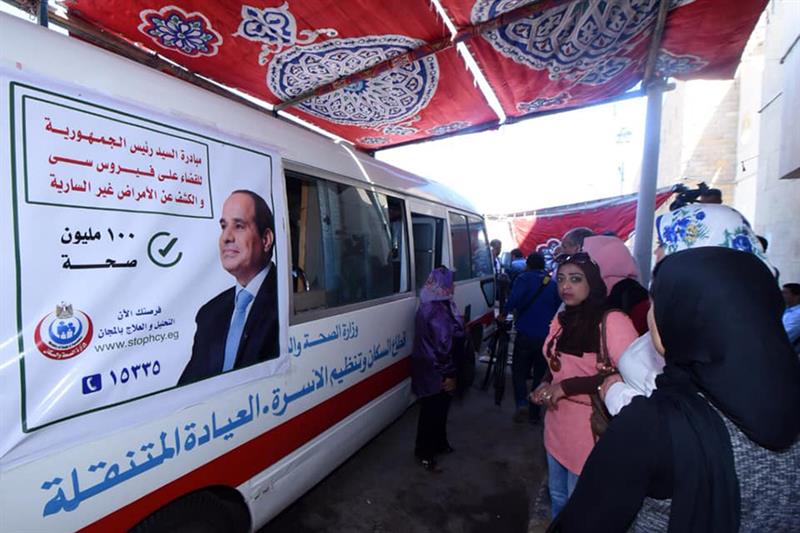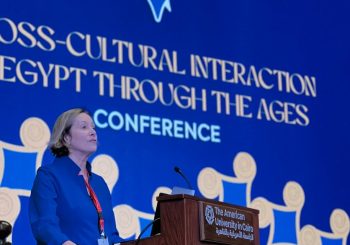In a historic milestone, Egypt has become the first country worldwide to attain WHO Gold tier certification on the path to eliminating hepatitis C (HCV), once the third-highest leading cause of death in the country.
Egyptian governmental efforts over the decades have led to a significant reduction in incidence rates, the latest of which was the 100 Healthy Lives Campaign.
The nationwide campaign, which involved extensive testing and free treatment, has dramatically reduced the prevalence of hepatitis C from 10 percent in 2016 to 0.38 percent in 2022.
What is Hepatitis C?
Hepatitis C is a viral infection that primarily affects the liver. It causes inflammation and can potentially lead to serious hepatic damage.
The virus is typically spread through contact with infected blood, often due to unsafe medical practices such as improper sterilization of medical equipment or through intravenous drug use.
Many individuals infected with hepatitis C may not exhibit symptoms for years, allowing the virus to spread silently. However, chronic hepatitis C infection can eventually result in severe liver complications, including cirrhosis and liver cancer.
Extensive public health efforts, including widespread testing and treatment initiatives, have earned Egypt worldwide praise from WHO and the World Bank.
History and Prevalence
Between the 1950s and 1980s, the Egyptian Ministry of Health, with support from the World Health Organization, implemented a mass treatment campaign to combat schistosomiasis, otherwise known as Bilharzia, a parasitic disease prevalent in the Nile Delta.
The campaign, which relied on intravenous injections of tartar emetic, a compound that was historically used as a treatment for parasitic diseases, inadvertently led to widespread HCV transmission due to poor sterilization practices and the reuse of medical equipment.
Over 36 million injections were administered to more than 250,000 patients annually during this period. The lack of awareness and insufficient infection control measures allowed HCV, a virus unknown to medical science until the 1990s, to spread unchecked.
Millions of Egyptians contracted HCV, with acute clinical symptoms absent in about 80 percent of infections, facilitating unnoticed and rapid spread.
The discovery of oral drugs for schistosomiasis in the late 1970s, such as praziquantel, marked the end of the injection-based treatment era. By then, the damage was already done, with HCV seroprevalence reaching alarming levels, particularly in the Nile Delta region.
100 Million Healthy Lives and Other Efforts
Since the 1990s, the Egyptian government has undertaken extensive efforts to combat HCV, focusing on blood safety, infection control, and public awareness.
In 2006, Egypt launched a network of specialized treatment centers to combat hepatitis C, making testing and treatment accessible and free for everyone. This initiative was bolstered in 2014 with the discovery of new antiviral medicines, aligning with WHO’s hepatitis treatment guidelines emphasizing the risks of untreated disease and the importance of widespread testing and treatment. However, by 2015, an estimated 5.5 million people were still chronically infected.
Determined to eradicate HCV, the government launched an ambitious and coordinated campaign, significantly reducing infection rates. In 2018, the Egyptian government escalated its efforts with a massive nationwide campaign to detect and treat hepatitis C, known as the 100 Million Healthy Lives Campaign.
This ongoing campaign initially targeted everyone over 18 and later expanded to include children aged 12 and older. It also featured routine testing at healthcare facilities and extensive community outreach, with teams visiting public spaces, workplaces, religious institutions, and popular meeting places such as barbershops. Additionally, the campaign ensured that vulnerable populations, including refugees, migrants, and persons with disabilities, were not left behind.
Screening sites operated 12 hours a day, seven days a week, to ensure accessibility. A mass media campaign educated the public about hepatitis C and aimed to reduce stigma. Screening, treatment, and follow-up visits were free for all participants.
During the initial seven-month campaign, 900,000 people received treatment for confirmed hepatitis C, with an additional 700,000 treated afterward. The cure rate was 98 percent. By February 2020, four million Egyptians had been treated for hepatitis C through the National Network of Treatment Centers.
The campaign successfully reached and tested over 60 million people using WHO-approved rapid diagnostic tests. During the campaign, 2.2 million people tested positive for hepatitis C antibodies, and those with chronic hepatitis C received treatment. Additionally, patients were assessed and treated for other chronic diseases like hypertension and diabetes.
Since the campaign’s launch, Egypt’s hepatitis C cure rate has exceeded 98 percent.
By 2023, Egypt had diagnosed 87 percent of people living with hepatitis C and provided curative treatment to 93 percent of those diagnosed. This achievement surpasses the WHO gold-tier targets of diagnosing at least 80 percent of people living with hepatitis C and treating at least 70 percent of those diagnosed.
“Egypt’s journey from having one of the world’s highest rates of hepatitis C infection to being on the path to elimination in less than 10 years is nothing short of astounding,” said Tedros Adhanom Ghebreyesus, WHO Director-General.
“Egypt is an example to the world of what can be achieved with modern tools and political commitment at the highest level to use those tools to prevent infections and save lives. Egypt’s success must give us hope and motivation to eliminate hepatitis C everywhere.”







Comments (4)
[…] interventions. Additionally, the country offers the treatment of Hepatitis C, given it has eradicated Hepatitis C in a […]
[…] post How Egypt Eradicated Hepatitis C in Just Over a Decade first appeared on Egyptian […]